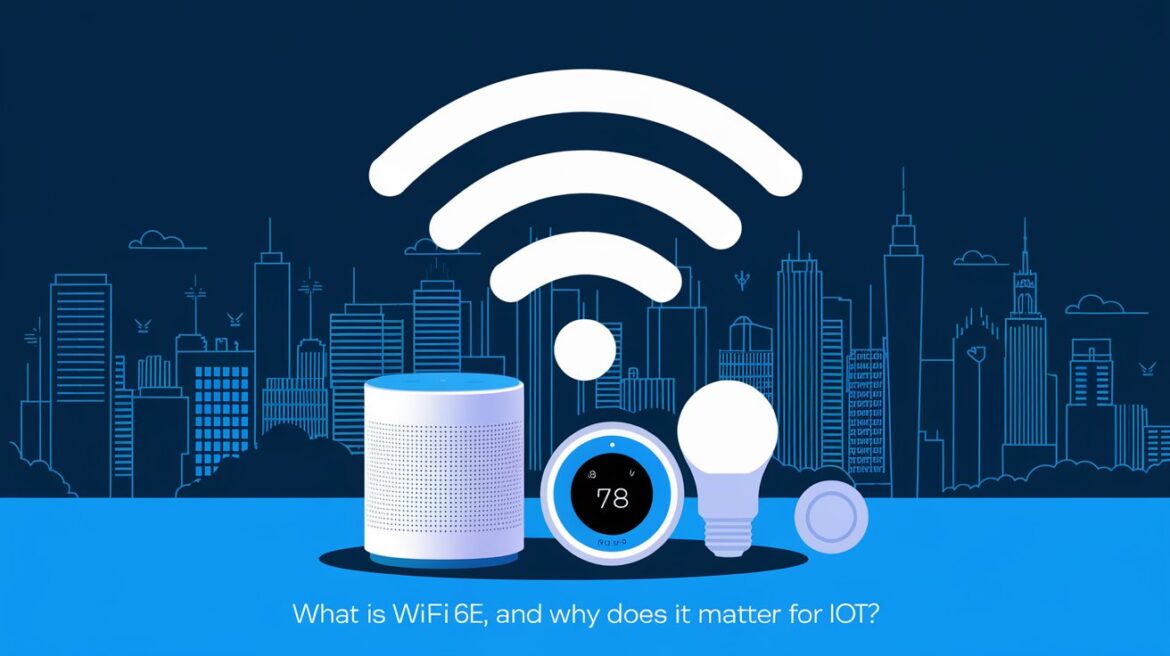In the rapidly evolving landscape of wireless connectivity, Wi-Fi 6E represents a significant leap forward—particularly for Internet of Things (IoT) applications. While Wi-Fi 6 brought improved efficiency and performance to existing Wi-Fi networks, Wi-Fi 6E expands into entirely new territory by utilizing previously unused spectrum. This evolution is poised to transform how IoT devices connect, communicate, and perform.
Understanding Wi-Fi 6E: The Basics
Wi-Fi 6E is essentially Wi-Fi 6 (802.11ax) extended into the 6 GHz frequency band. Traditional Wi-Fi has operated in the 2.4 GHz and 5 GHz bands, but Wi-Fi 6E adds access to the newly available 6 GHz spectrum. This expansion isn’t just an incremental improvement—it adds up to 1,200 MHz of additional spectrum, more than doubling the total bandwidth available for Wi-Fi devices.
The “E” in Wi-Fi 6E stands for “Extended,” signifying this expansion into new frequency territory. While it maintains all the improvements introduced in Wi-Fi 6—including enhanced OFDMA (Orthogonal Frequency Division Multiple Access), Target Wake Time, and higher-order 1024-QAM modulation—it delivers these benefits in a less congested spectrum.
The 6 GHz Advantage for IoT
The introduction of the 6 GHz band brings several critical advantages specifically beneficial for IoT implementations:
Reduced Congestion
The 2.4 GHz and 5 GHz bands are increasingly crowded with devices, creating significant interference in dense deployments. The pristine 6 GHz band provides wide-open channels with minimal interference—perfect for IoT environments requiring reliable connections.
Higher Throughput
With wider channels (up to 160 MHz), Wi-Fi 6E can deliver multi-gigabit speeds. While many simple IoT sensors don’t need high bandwidth, advanced IoT applications like industrial automation, video surveillance, augmented reality, and medical imaging can leverage these increased data rates.
Lower Latency
The combination of less congestion and Wi-Fi 6 technologies results in significantly reduced latency—crucial for time-sensitive IoT applications like industrial controls, autonomous systems, and smart infrastructure where milliseconds matter.
Improved Device Density Management
IoT deployments often involve hundreds or thousands of connected devices in close proximity. Wi-Fi 6E’s expanded spectrum and enhanced multi-user capabilities allow for more efficient management of device-dense environments, ensuring reliable connectivity even as IoT deployments scale.
Real-World IoT Applications Benefiting from Wi-Fi 6E
Several IoT sectors stand to gain substantially from Wi-Fi 6E adoption:
Smart Manufacturing
Factory floors with numerous connected sensors, robotic systems, and quality control equipment can operate more efficiently on dedicated 6 GHz channels, minimizing interference and ensuring critical manufacturing processes remain uninterrupted.
Healthcare IoT
Medical facilities with sensitive equipment, patient monitoring systems, and high-resolution imaging devices can benefit from Wi-Fi 6E’s improved reliability and performance. The isolated 6 GHz spectrum also provides better separation from potentially life-critical wireless systems.
Smart Cities
Urban IoT deployments face extreme congestion in traditional Wi-Fi bands. Wi-Fi 6E enables more reliable performance for traffic management systems, public safety networks, environmental monitoring sensors, and other municipal IoT applications.
Immersive Technologies
AR/VR devices and spatial computing applications—increasingly important in industrial training, remote assistance, and consumer IoT—require high bandwidth and low latency that Wi-Fi 6E can deliver consistently.
Implementation Challenges
Despite its advantages, Wi-Fi 6E adoption in IoT faces several hurdles:
- Hardware Requirements: IoT devices need new radio components to access the 6 GHz band, which may increase costs and power consumption in the short term.
- Power Efficiency: Many IoT devices operate on batteries or limited power sources. Manufacturers must optimize 6 GHz radios for energy efficiency.
- Range Limitations: Higher frequency signals like 6 GHz don’t travel as far or penetrate obstacles as effectively as lower frequencies. IoT deployments may require more access points or strategic placement.
- Regulatory Variations: Different countries are adopting varying approaches to 6 GHz regulation, creating challenges for global IoT deployments.
The Future Landscape: Wi-Fi 6E and Beyond
Wi-Fi 6E represents a significant but transitional step in wireless evolution. As IoT continues to expand, we’re likely to see:
- Increased integration of Wi-Fi 6E with other wireless technologies like 5G in hybrid IoT networks
- Progressive migration of critical IoT applications to the 6 GHz band
- Development of specialized IoT devices that dynamically select optimal frequency bands based on application requirements
- Evolution toward Wi-Fi 7, which will further enhance IoT capabilities
Conclusion
Wi-Fi 6E offers a powerful solution to the growing connectivity demands of IoT ecosystems. The combination of additional spectrum, reduced congestion, and enhanced performance makes it particularly valuable for next-generation IoT applications requiring reliability and responsiveness.
For IoT implementers, Wi-Fi 6E isn’t simply about faster speeds—it’s about creating more reliable, scalable, and future-proof wireless infrastructure. As IoT devices proliferate in homes, businesses, and cities, the expanded capacity and capabilities of Wi-Fi 6E will play an increasingly critical role in enabling the connected world of tomorrow.
